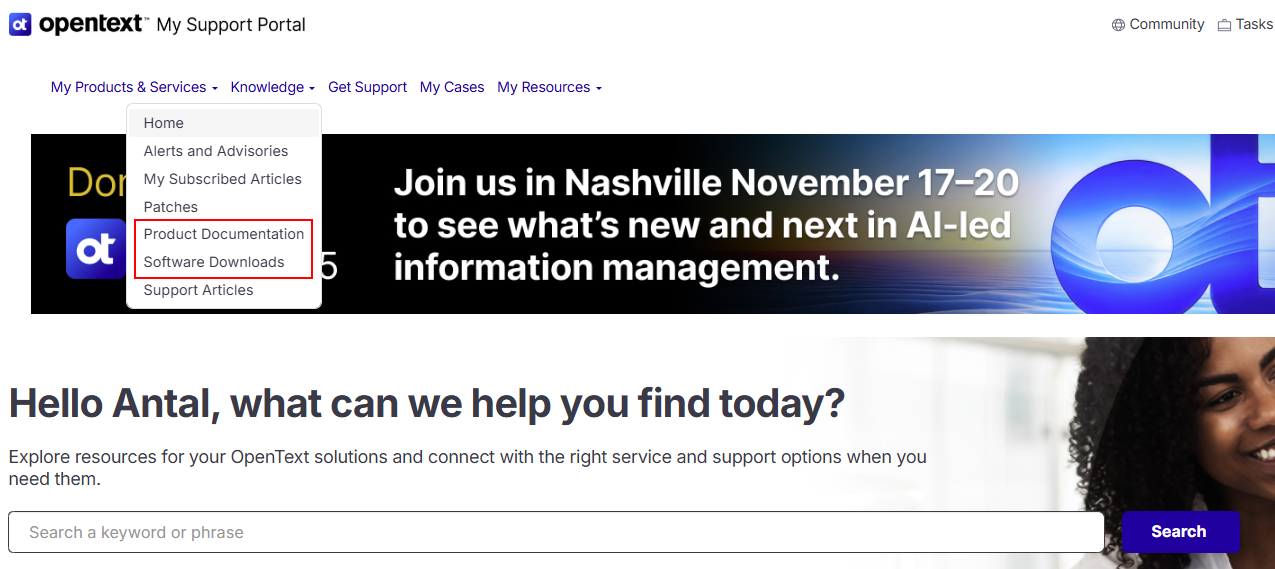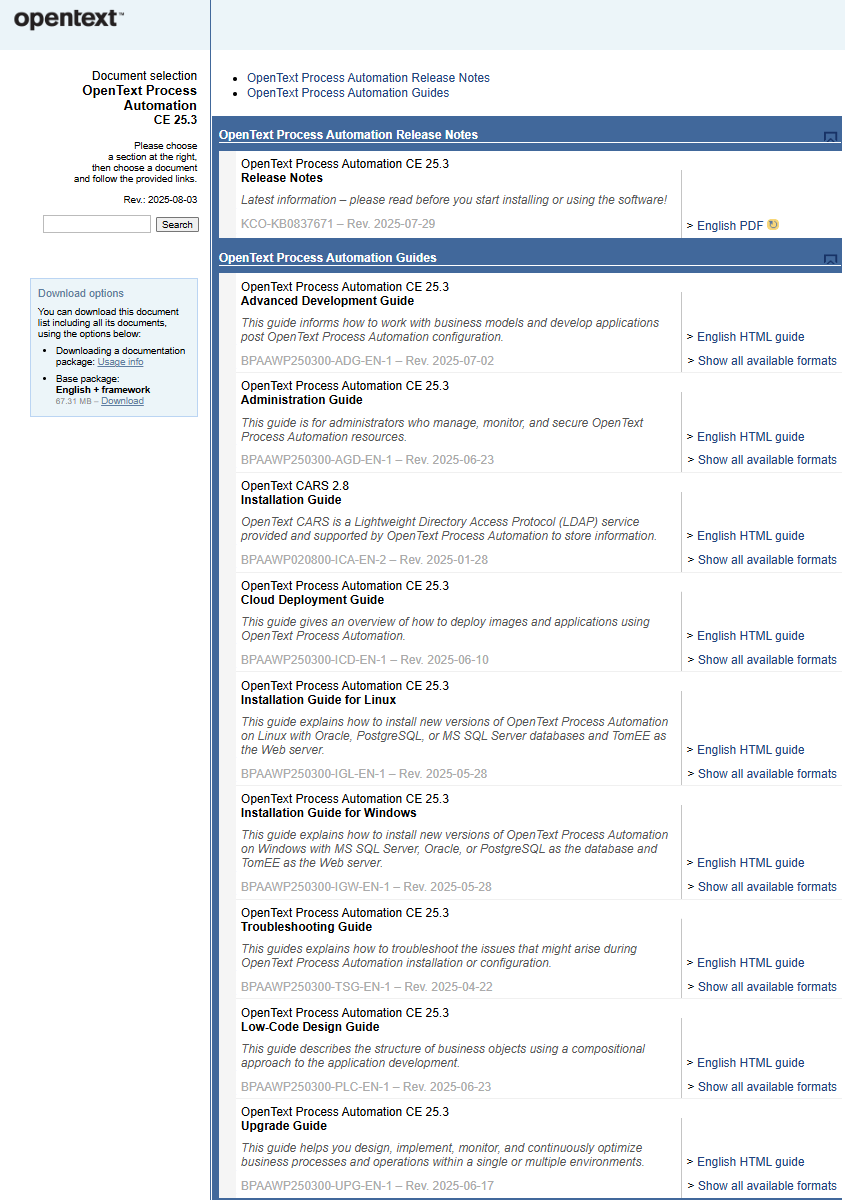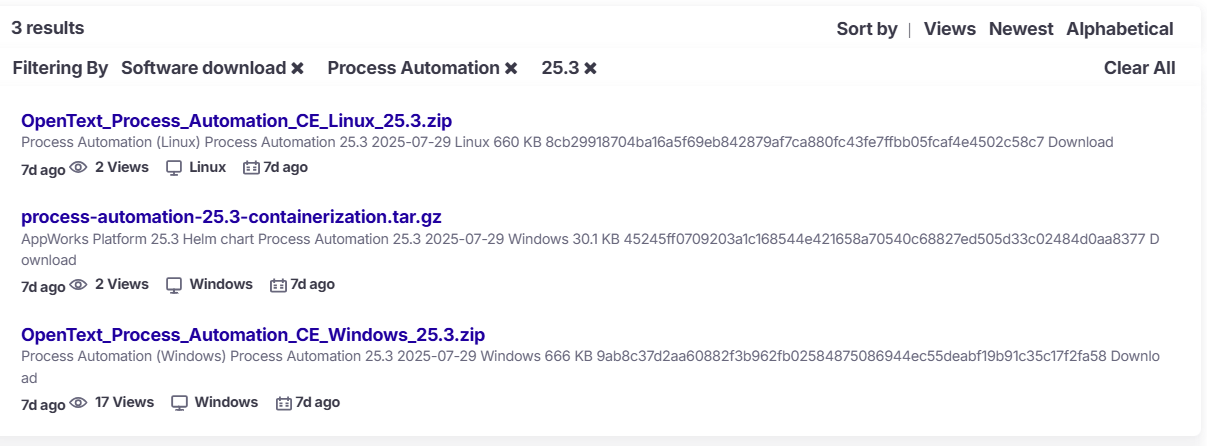Hi there “Process Automation” fans,
On every product I’ve worked with, there’s always this next question:
How to start with it and where can the information around the product be found?
If you also have this question on the “Process Automation” product you are in the right place! We are going to answer that question for the “Process Automation” platform (powered by OpenText™).
In this installment of “Process Automation” tips we are going to give the ultimate overview of where you can find all the relevant information on “Process Automation”. Most of the information is found on the interwebs. Sometimes open for free, and sometimes you need to log in with credentials or do a registration. We’ll cover it all.
Let’s get right into it…
The first thing I did for a startup is just google “OpenText Process Automation” and see what is available at this moment. You will see that several URL’s will be shown in the overview. Some are valuable, but most URLs are from partners that use the “Process Automation” platform for implementation at their customers.
Valuable URL’s available for everyone
After a simple google search:
- The landing page for the “Process Automation” product: OpenText product information page
- The Developers community for the programmers and the API consumers
You will see a lot of information on this page, but most of the information has to do with the “Process Automation” Gateway. Don’t make the same mistake I did by starting with this product. The ‘gateway’ is a service where you deploy mobile apps on. These apps can be created with the “Process Automation” SDK.
On this blog we have the focus on the “Process Automation” low-code development platform what is something different from the ‘gateway’! Also, the software packages for our focus are not available on this developer community site. We’ll see that later in this post.
You can skip the ‘API’ parts on the “Developers community” for now and continue the ‘Products’ part as something nice is available for us low-code developers on this site. That’s the Process Automation resources section. ‘AppWorks Platform’ is the old name of the currently known low-code “Process Automation” platform we will start using.
Find your way to OpenText Directory Services (OTDS) here; The SDK details are here. The “Process Automation Gateway” (we don’t use it here) is found here. Finally, you find the community forums here
You can also create an account here, so you are able to ‘Sign in’. This makes it possible to also ask new questions and post new information.
Valuable URL’s you just must know
This is your entry to the OpenText support site. Make sure you register on this site as it will be your main source of information! Do this also with a valid domain mail address of the customer having an agreement with OpenText. This makes sure you directly get access to the correct resources!
There is a lot to be found on this site, but the first steps for you to start is in these locations:

Make sure you look primarily for “Process Automation” Platform to get to the correct information. Looking for “Process Automation Gateway” will bring you to the already mentioned mobile app SDK information. You can also find valuable information when you just look for “Process Automation” or more specific adding a hashtag like #processautomation25.3.
- “Process Automation” Developers forum is available for getting answers and ask your questions
- “Process Automation” Documentation version 25.3 makes all the nicely crafted PDF/HTML documentation available
- “Process Automation” Downloads version 25.3 makes all the ZIP files available for download and installation
In the past ‘AppWorks’ and ‘AppWorks platform’ had small difference in software packages. The ‘Process Automation (OPA)’ does not have all you need as you require OpenText Directory Services to make licensing work. This OTDS product is the LDAP spider in the OpenText service web which makes ‘Single Sign On’ much easier on all the OpenText products. Read about it here!
Documentation
Covered in a full set of PDF documents…
In the past, documentation is delivered with the software, but these days you need to download it separately!
If you follow the Documentation link you get access to all the valuable information:

But what is covered in all these PDFs? We will describe it in this ordered list of reading. We start with the required manuals, and then we cover the optional manuals:
- Supported Environments (required); The “Process Automation” platform required several software packages it depends on. The minimal versions you need for these packages are described in this PDF. Make sure you use the correct versions for these software packages, so you create a supported environment.
- Installation Guide for Linux (required); The guide where we all waited for. There is also a Windows version, but we use Linux. You’ll see that some information is still told in the ‘Windows’ way, but still it is a good reference for installing the software. Of course, you can also follow the “Process Automation” installation in 10 great steps.
- Low-Code Design Guide (required); When you have an environment available, this is your main guide to learn about entity modeling. The first baby steps are made here, and you can continue growing in the low-guide development parts.
- Advanced Development Guide (optional); If you think you know it all…Then is the moment to start with this next level ‘Low-Code Design Guide’. It covers more on the BPM and the services…The good stuff!
- Troubleshooting Guide (optional); Your troubleshooting guide when you get stuck during the installation, but you won’t if you follow the steps.
- Configuration Guide (optional); It’s a kind of extension on the troubleshooting guide. Use it when needed.
- Administration Guide (optional); At some point in the future, some *&%$#^! is going to hit the fan. That is your moment of fame to enter this guide. It’s a 1200-page PDF that will help you in using all kinds of tools for fixing your fan again.
- Performance and Tuning Guide (optional); The out-of-the-box installation runs smoothly already, but it can always get better. This guide will help you on your performance journey!
- API Reference Guide (optional); Nice reference guide when you start consuming the service API layer of the platform.
- CARS Installation and Administration Guide (optional); ‘Cordys Administration Repository Server’ is required for the “Process Automation” platform. It serves as kind of database to store all the information. The installation part is also covered in the normal ‘Installation Guide’. The Administration part is not directly used, but it’s good to know where you can find it. CARS will run nice and steady without any maintenance.
- Upgrade Guide (optional); Needed when upgrading. From our standpoint (where we just develop without any production environment) we’ll probably don’t need it as we can easily create a new environment with the latest software again.
- High Availability Deployment Guide (optional); Not needed from our standpoint. Only when you have a requirement that matches the header of this document.
Every release also delivers a “Release notes” PDF with new features and changes. We write about all new releases here
Software
Downloadable from the support site. Follow the link to “Process Automation” downloads to get to the correct section, but it’s better to search with a correct tag like #processautomation25.3!

The “Process Automation” software can be installed in 3 ways:
- Windows ->
OpenText_Process_Automation_CE_Windows_25.3.zip - Linux ->
OpenText_Process_Automation_CE_Linux_25.3.zip - Docker (containerized) ->
process-automation-25.3-containerization.tar.gz
The software depends on a database instance (like Postgres), an application server (like TomEE), and Java; You learn this in the “Process Automation” installation in 10 great steps
Training courses
Available on the “Process Automation” Training Courses site. They are not for free, but valuable lessons to learn. With these courses you will get an online environment available and a printed book to follow (constructor-led or self-paced).
- 2-4912 Low-Code Design is the main course where you will learn about entity modeling and the related building blocks
- 4-4913 Process Modeling will teach you about creating processes with BPM. It’s the next step when you know your entity modeling
- 4-4914 Business Administration is all about maintaining an OPA platform instance
- 4-4915 Administration is all about installing the platform and using the management tools
- 3-0300 OTDS is about the LDAP spider in the web of OpenText products
One final left-over resource
The “pre-sales party center” at hol3.eimdemo.com; An interactive, self-paced learning experience that enables you to advance your knowledge of OpenText products. Make sure you sign up with a valid domain account to gain access to the famous “Testdrive”, product demos, and product labs to follow and grow your skills.
And that gives us a nice ultimate overview and a big ‘DONE’ on the ‘Where to start with Process Automation’ post. It’s a long list of information, but it is good to know where all the information can be found. The next step is to make an image available. So, make sure you check out the post on the ‘Process Automation installation in 10 great steps’. Have a good one for now and I see you in one of the other posts in this blog.
Don’t forget to subscribe to get updates on the activities happening on this site.


